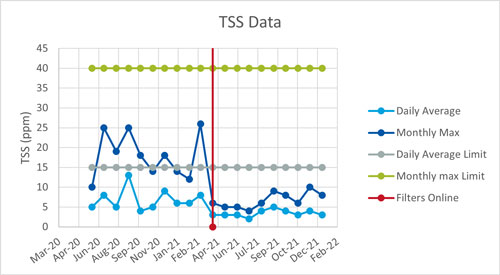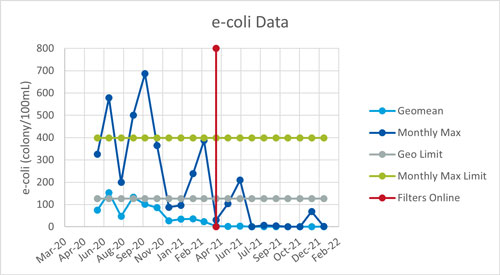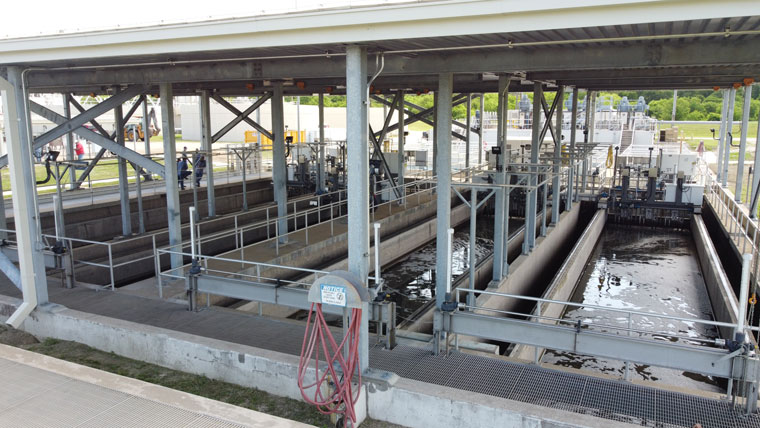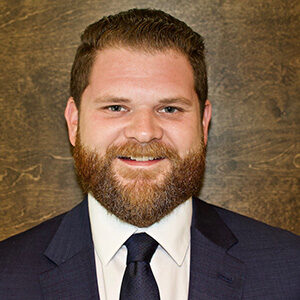Traveling bridge sand filters have helped wastewater utilities produce clean effluent for decades. But many are reaching the end of their useful life. During or near peak flows, these aged filtration systems cannot process wet weather flows, requiring at least a partial filtration system bypass. This decreases the plant’s effluent quality and increases the risk of discharge permit violations.
So what can utilities do to overcome this problem? Cloth filtration systems can offer a relatively simple fix. Cloth filtration systems come in several different physical configurations, some of which can use the existing filtration basins of sand filter systems. Utilities can thus avoid constructing new basins, saving them a lot of space and money. Also, compared to traveling bridge sand filters, cloth filtration has a higher throughput capacity and produces a higher quality effluent.
Increased Filtration Capacity
Increasing a wastewater treatment facility’s filtration capacity will reduce or possibly even eliminate the need to bypass filters during peak flow events. 6.5 gallons per minute per square feet (gpm/sf) is a typical maximum hydraulic loading rate used during design for cloth filtration systems.
These systems have a 2.7 times greater solids loading capacity than traditional sand filters, allowing them to handle high total suspended solids (TSS) loadings with less backwash water. Filtration systems such as Aqua-Aerobics AquaDiamond™ also increase the filtration surface area within the existing traveling bridge filter basins, using a physical configuration similar to that being replaced.
This has real-world impacts for our clients. The table below shows the filtration capacity of an existing traveling bridge sand filtration system versus the recently-completed cloth filter system design for a wastewater treatment facility in North Texas. The facility has a 24 million gallon per day (MGD) average daily flow and 43 MGD peak flow. The cloth filtration system has a 74% larger surface area.

Higher Quality Effluent
As traveling bridge sand filters age, the filtration capacity and efficiency are reduced. This can lead to more frequent bypassing and less efficient solids capture. Wastewater treatment facilities can run the risk of a permit violation each time filtration systems are bypassed. Two common effluent quality parameters violated during these bypassing events, depending on the state in which the plant operates and the permit limits for the specific site, are TSS and E. Coli. The tables below show effluent quality data from the wastewater treatment facility described above. The cloth filtration system began processing wastewater in April 2021. From this data set, the average TSS and E. Coli effluent concentrations were reduced by 50% and 97%, respectively.





